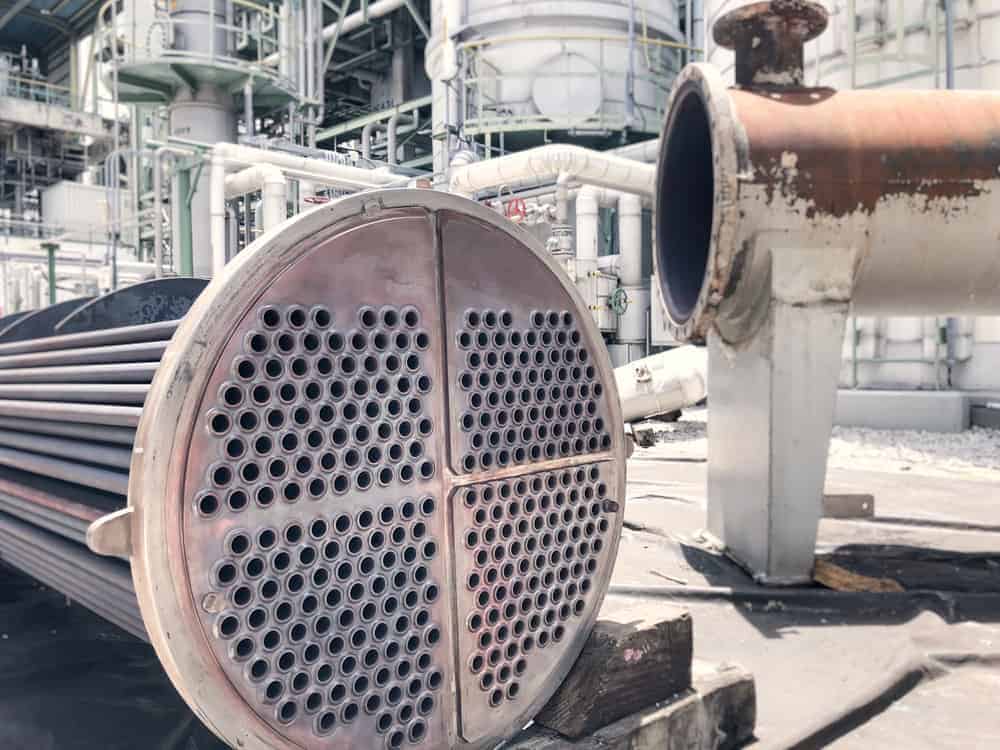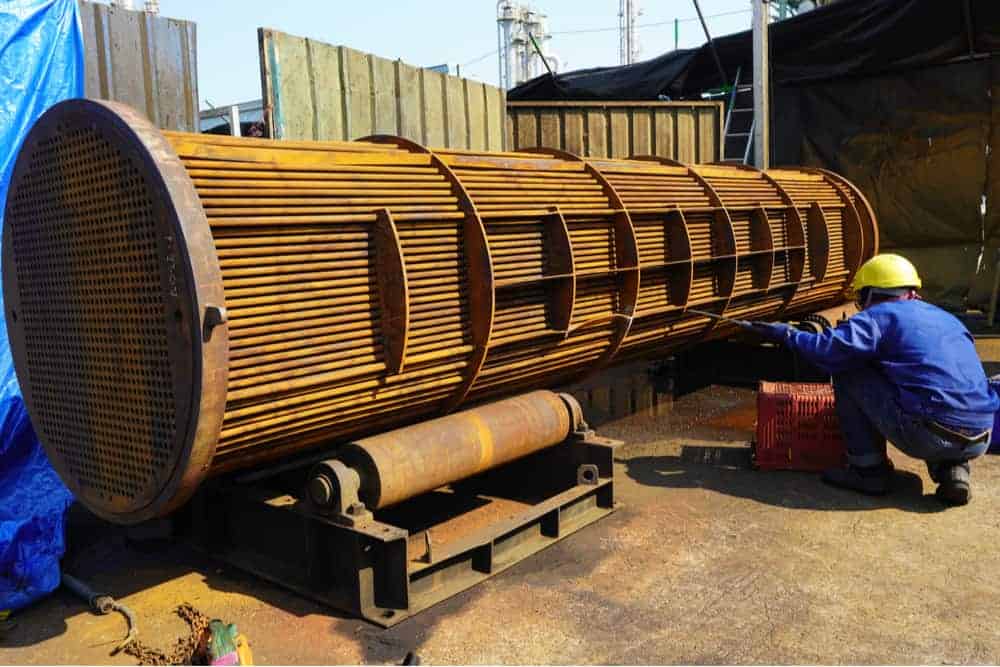Heat Exchanger Tube Inspection Techniques: An Overview

Making a choice between the various heat exchanger tube inspection techniques centers on two things: timing and access. In most cases, the inspection occurs because of an outage, with the goal being to get back online as quickly as possible. Ideally, inspection techniques will allow for the rapid discovery and resolution of flaws while working efficiently with ferromagnetic and non-ferromagnetic alloys.
A missed flaw could result in more extended periods of downtime that lead to expensive losses. Accuracy is vital in ensuring proper resolution. Typical heat exchanger tube inspection techniques include eddy current, remote field eddy current, internal rotating ultrasonic, flux leakage, and laser optic.
Common Challenges in Heat Exchanger Inspections

Heat exchanger tube inspections have to be sophisticated due to some issues with the material, form, and purpose of tests. It can be challenging to garner accurate NDT results due to:
- Time or budgetary constraints: At times, only a sample of the heat exchanger tubing is under review due to time or cost constraints. Technicians will target the area most likely to be the cause of problems.
- Manual, inconsistent process: Current manual methods might not deliver the confidence needed across a full inspection campaign. Data acquisition and analysis can be spread across multiple inspection crews leading to the possibility of inconsistencies and the commonly asked question: “Are we capturing all our flaws?”
- Reactive testing: Routine reviews of heat exchanger tubes are less of a concern than more frequent inspections due to malfunction. It’s possible to find flaws that aren’t directly related to the malfunction and mistakenly assume they’re the ones that require resolution. When this fails to resolve the issue, the entire inspection must start again.
- Complex inspection techniques: There are no valid heat exchanger tube inspection techniques for non-specialists. All require sophisticated technology, like array probes, and a deep understanding of NDT and the data it recovers. It can be challenging to find the right personnel to complete the task.
- Turnaround: Some NDT inspection techniques can require extensive preparation and are slow-moving. Facilities are usually in a rush to return their equipment to functional status, so such delays are concerning. Furthermore, final analysis and reporting can lag the acquisition process by days, delaying dispositioning of the component.
Of course, these aren’t the only issues to consider in managing heat exchanger tube inspections. It’s vital to consider the different types of flaws and their suspected location to streamline testing.
Pre Heat Exchanger Tube Inspection Considerations
Oftentimes, before conducting a heat exchanger tube inspection, the technician will have an idea of what they’re looking for. The type of flaw and its location will determine what heat exchanger tube inspection technique the technician leverages.
| Defect Types | Location |
|
|
A basic understanding of the type of flaw and its location will help the technician choose the right technique. Some standard heat exchanger tube inspection techniques are ideal for corrosion, while others are best for discovering cracks in bends or tubesheets and plates. With the right knowledge, the inspector will choose the technique to locate the flaw at the first pass and get the machinery back online faster.
5 Heat Exchanger Tube Inspection Techniques
Heat exchanger inspections are varied for a reason. Technicians deal with different kinds of materials, flaws, and sizes, all of which may require a different inspection method. In many cases, more than one inspection method will help to locate problems.
| Learn how to improve heat exchanger tube inspection techniques by watching our webinar! |
#1: Eddy Current Testing (ECT)
A probe with a single coil—or ideally, an array of them—sends an electrical pulse throughout the component to be examined. The probe pulls through the tube, recording readings in the electrical field along the way. This method offers multiple benefits, making it one of the more popular techniques.
| Pros | Cons |
|
|
#2: Remote Field Eddy Current Testing (RFET)
RFET is similar to standard eddy current, where an electrical pulse creates a field. However, in this case, a transmission coil and receiver coil work together to transmit signals back and forth. This process allows for testing over greater distances, rather than being limited to smaller sample areas.
| Pros | Cons |
|
|
#3: Internal Rotating Inspection System (IRIS)
An internal rotating inspection system uses sound, rather than electricity, to locate flaws or discontinuities within a tube. Water fills the tube as a rotating probe moves from one end to another. Data is collected and recorded.
| Pros | Cons |
|
|
#4: Transverse Field Inspection (TFI)
TFI, often called magnetic flux leakage testing, is a process of leveraging magnets in testing for pitting, cracks, and corrosion in tubes. The steel is magnetized and then evaluated for magnetic leaks, which occur in areas of thinning or deterioration.
| Pros | Cons |
|
|
#5: Laser Inspection
A laser beam is projected onto the inspected tube. It maps the surface and penetrates to measure inside the wall as well. The laser rotates as the probe moves through the tube to provide a complete internal map. Light displacement measures flaws and discontinuities.
| Pros | Cons |
|
|
Eddy current based techniques are perhaps the most popular heat exchanger tube inspection methods because of their versatility. When seeking out a particular flaw, like corrosion or wall thinning, it may be wiser to choose a technique more adept at locating these very specific issues. Regardless of the method selected, there is one more essential facet to inspections that technicians must consider. That’s the software that helps them make sense of the data collected.
Choosing the Right Analysis Method to Increase Accuracy

The heat exchanger tube inspection technique chosen is only as good as the analysis of the data it garners. The possibility of human error in reviewing this data is significant and can result in wasted time, funds, and more extended equipment downtime. Leveraging automated analysis in heat exchange inspections can eliminate human error by allowing computer software to do the more complex calculations and data reviews involved in assessments.
Consider eddy current testing. Reduced inspection scope, limited data tracking, and the inspection’s complexity can result in less effective readings. Automating and refining the process of both data acquisition and analysis increases productivity and enhances results. Specifically, it allows for the faster completion of tests, so plants can complete more and improve their turnaround rates.
Automation can also help technicians leverage more complex but accurate solutions. Eddy current testing works best with an array probe, but this garners a lot of data which can be challenging to categorize and understand. Automated solutions aggregate this data and help to provide interpretations based on it.
Finally, technicians have varying experience levels. Results can differ from inspector to inspector. Automation standardizes results and helps to even the playing field for all technicians. Readings are consistent no matter who completes them.
Human error is the most significant barrier to accuracy in heat exchanger tube inspection techniques. Leveraging intelligent software—such as the RevospECT HX Pro by Zetec—to analyze data collected improves the probability of accuracy and speeds completion of these necessary tests. This process eliminates downtime and helps plants get machinery back online faster, with a lower risk of reoccurring problems.
Zetec offers eddy current inspection and highly detailed, automated software for evaluating results and improving output. Visit our contact page to learn more about our heat exchanger tube inspection techniques.
